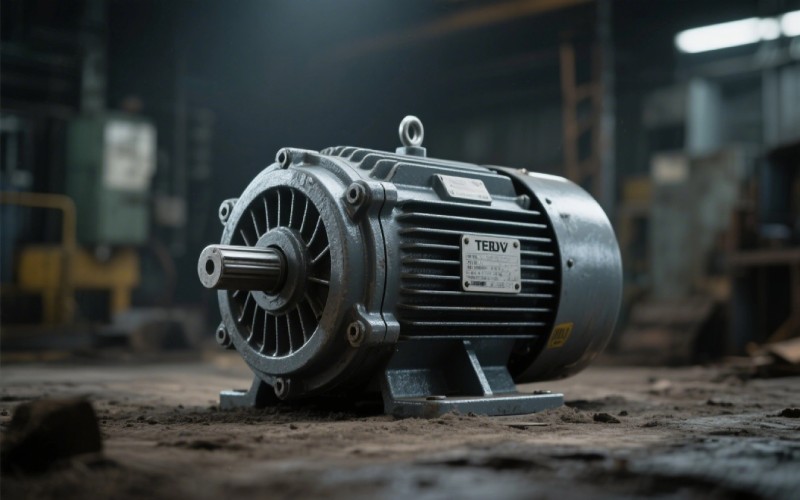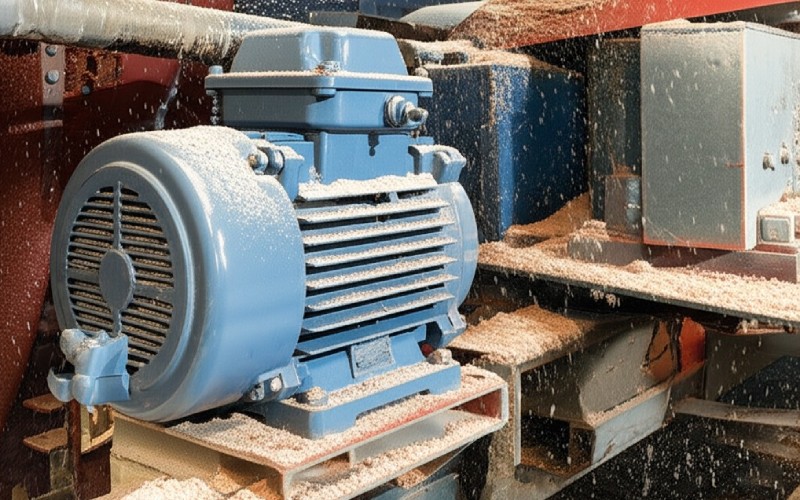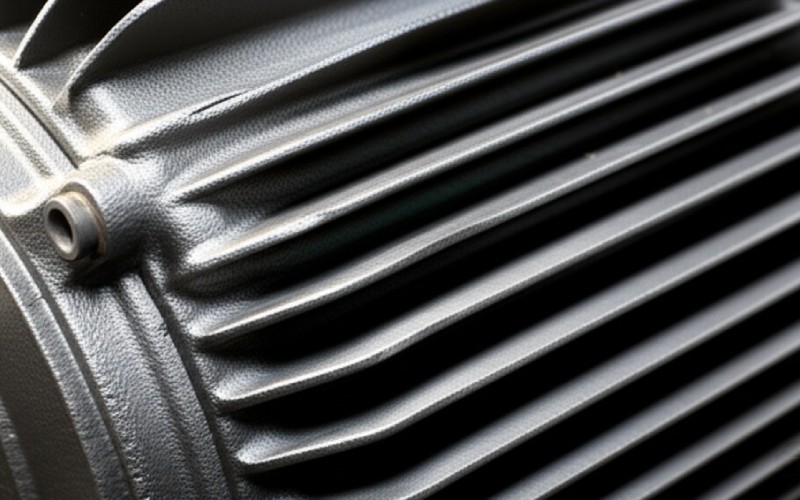Let Sino's Lamination Stacks Empower Your Project!
To speed up your project, you can label Lamination Stacks with details such as tolerance, material, surface finish, whether or not oxidized insulation is required, quantity, and more.

Over the years, I have worked with many different machines. I have learned that an electric motor is the heart of most of them. But not all motors are made the same way. You might hear people use short names like TEFC, ODP, and TENV. Today, I want to explain one of the most common types that people don’t understand well: the TENV or Totally Enclosed Non-Ventilated motor.
What is it? To put it simply, a TENV motor is a sealed motor that has no cooling fan. It is built to keep things like dirt, dust, and water out. Have you ever seen a motor covered in dirt? Or one that was broken by a splash of water? If you have, you will see right away why this is so important. This article is for you if you work with machines. It is also for you if you need to pick the right motor for a job, or if you just want to know how these hard-working machines run. We will explain in simple parts what “Totally Enclosed Non-Ventilated” really means. We will cover how it works without a fan, where you should use it, and why it could be the best choice for your next job.
Let’s begin with the simple facts. The name sounds long, but it tells you all you need to know. “Totally Enclosed” means the inside parts of the motor are sealed off from the outside air. These are the important, spinning parts. This design stops air from moving freely between the inside and the outside of the motor’s case. It is like a sealed box for your food. It keeps the good things in and the bad things out.
“Non-Ventilated” is the second part of the definition. It means there is no fan on the motor to help it cool down. Lots of other motors have a fan on the outside or inside. The fan blows air over the case to take heat away. But a TENV motor does not have one. This makes the motor’s design simpler. It is also often quieter. So, a totally enclosed non-ventilated motor is a sealed machine. It uses other ways to stay cool.
This is the question I am asked the most. If there is no fan, how does the motor not get too hot? The answer is easy: it cools by itself. A TENV motor is made to cool itself through the air around it. One way is called convection. This is when heat rises from the motor’s warm surface into the air. You have seen this with a hot drink. The steam goes up, and it takes heat away with it.
The body of the motor is also made to get rid of heat. These motors often have ridges, called fins, on the outside case. These fins add more surface area. A bigger surface area lets more heat go into the air. It is just like the cooling fins you see on a motorcycle engine. The motor “breathes” heat out through its whole body. This way of cooling is often called “natural cooling.”
Not having openings is the main idea of a totally enclosed non-ventilated design. Openings would let things like dust, dirt, water, and even chemicals get inside the motor. In many factories, the air is full of tiny bits that could block up a motor and make it stop working. I have seen motors in wood mills and cloth factories get completely ruined. This happened because sawdust or fluff got pulled in through the openings.
By having no openings, a TENV motor gives great protection to its inside parts. The “totally enclosed” part of its name means it is built to live in tough places. It is not totally airtight or waterproof, so you cannot put it completely under water. But it does a very good job of keeping out the usual things that cause problems. This makes the motor last much longer in a dirty or wet environment.
You will find TENV motors in many kinds of places. They are often used where things need to be clean and quiet. They are also used where the environment is unfriendly to other motor types. A great application is on moving belts in factories where there is a lot of dust and dirt. They are also a great use for pumps and fans, especially when you do not want a fan blowing dirt everywhere.
I have seen them used in places that make food, where the machines need to be washed. The sealed case helps protect the motor from water. Because they do not have a cooling fan, they are also more quiet than other motors. This makes them a good choice for places like hospitals or libraries where noise is a problem. Any application where the motor might get a little wet or dirty is a good place for a TENV.
A TENV motor is tough, but it cannot be used everywhere. It is perfect for places that are dirty, dusty, and a little wet. But, it is not made for very wet places where it could be put completely under water. They are also not airtight. This means you should not use them where there are dangerous gases or dust that could explode. For those dangerous places, you need a special explosion-proof motor.
The other big thing to think about is heat. A TENV motor cools down on its own, so it can get hot. It is not the best choice for very hot places. It is also not the best for very hard jobs that run all the time with a big load. The heat needs a place to go. If the air around it is already very hot, the motor will have a hard time cooling down. This can change how well it works and how long it lasts.

As we talked about, a totally enclosed non-ventilated motor gets rid of heat in two main ways. One way is when heat leaves the motor’s surface and goes into the air. The motor’s frame is very good at doing this. It is often made of heavy metal or has cooling fins.
The other way is by passing heat to something it touches. The motor moves its heat to whatever it is attached to. If the motor is bolted to a big metal frame, that frame will work like a big heat sink. It will pull warmth away from the motor and help it cool. This is why how the motor is attached is so important for a TENV motor to work the right way. It needs its whole environment to help it stay at the right temperature.
This is something that often confuses people. A TENV and a TEFC motor look a lot alike. They are both “totally enclosed.” This means they are sealed to keep out dirt and water. The main difference is the “FC” part. It stands for “Fan-Cooled.” A TEFC motor has a fan on the outside. This fan is on the shaft, and it blows air over the motor’s body to cool the motor.
Here is a simple table that shows the difference:
| Thing to Compare | TENV (Totally Enclosed Non-Ventilated) | TEFC (Totally Enclosed Fan-Cooled) |
|---|---|---|
| How it Cools | Cools by itself using the air around it. | An outside fan blows air over the motor. |
| Fan | It has no fan. | It has a fan on the outside. |
| Noise Level | It is more quiet. | It is louder because of the fan. |
| Best Place to Use | Dusty areas where a fan could get blocked. | General factory areas that might be dusty or wet. |
| Size | It may be bigger than a TEFC with the same power to help get rid of heat. | It is smaller for the same power because it cools better. |
A TEFC motor can handle bigger jobs and hotter places. This is because the fan cools it down well. But, that fan can get blocked in very dirty places. This is where a TENV motor is the best choice.
Picking the right electric motor depends on the job it needs to do and the place it will be. I suggest using a TENV motor for any application that has these things:
A good, simple rule I use is this: if a fan could be a problem, a TENV is likely the right choice. A fan could be a problem if it gets blocked or if it blows dust around.
Just like any tool, a TENV motor has its good points and bad points. I have learned from my work when to use one and when to choose something else.
Good Things:
Bad Things:

How big a TENV motor is is directly linked to how well it can cool itself. A bigger motor has more outside surface. This lets it get rid of heat more well. This is why a 10-horsepower TENV motor will be much bigger than a 10-horsepower TEFC motor. The extra size and surface area are needed to do the job of the missing fan.
This is also why you do not see very big TENV motors. When a motor gets too powerful, it makes so much heat that natural cooling is not enough. The motor would have to be huge to get rid of the heat. So, for most jobs that need low to medium power, a TENV motor is a great and trustworthy choice. But for the really hard jobs, you will almost always see a motor that has cooling with help, like from a fan.
To finish, here are the most important things to remember about the Totally Enclosed Non-Ventilated (TENV) motor: